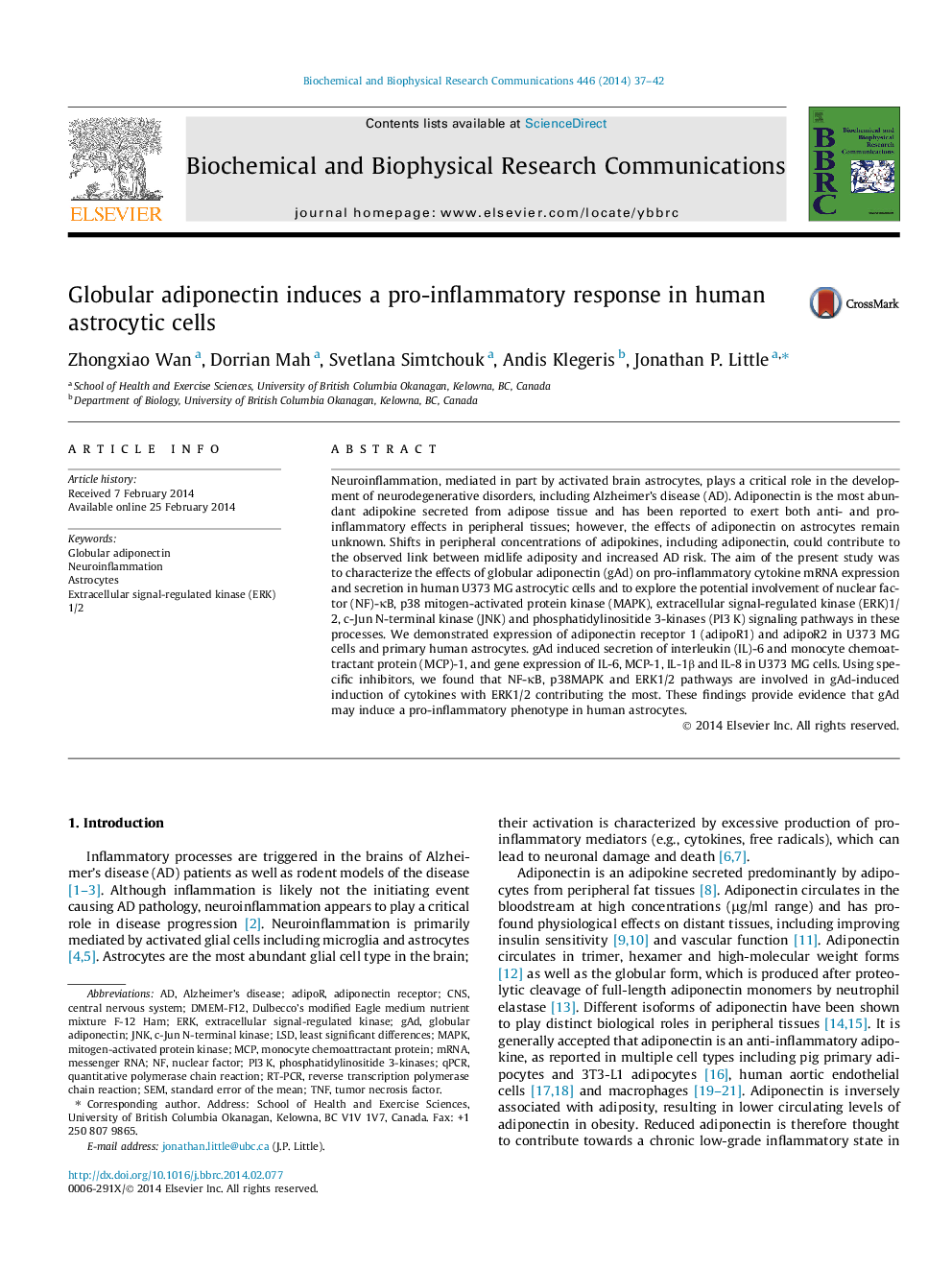| کد مقاله | کد نشریه | سال انتشار | مقاله انگلیسی | نسخه تمام متن |
|---|---|---|---|---|
| 10755281 | 1050372 | 2014 | 6 صفحه PDF | دانلود رایگان |
عنوان انگلیسی مقاله ISI
Globular adiponectin induces a pro-inflammatory response in human astrocytic cells
ترجمه فارسی عنوان
آدیپونکتین غیرفعال باعث پاسخ مثبت التهابی در سلول های آستروسیت انسان می شود
دانلود مقاله + سفارش ترجمه
دانلود مقاله ISI انگلیسی
رایگان برای ایرانیان
کلمات کلیدی
موضوعات مرتبط
علوم زیستی و بیوفناوری
بیوشیمی، ژنتیک و زیست شناسی مولکولی
زیست شیمی
چکیده انگلیسی
Neuroinflammation, mediated in part by activated brain astrocytes, plays a critical role in the development of neurodegenerative disorders, including Alzheimer's disease (AD). Adiponectin is the most abundant adipokine secreted from adipose tissue and has been reported to exert both anti- and pro-inflammatory effects in peripheral tissues; however, the effects of adiponectin on astrocytes remain unknown. Shifts in peripheral concentrations of adipokines, including adiponectin, could contribute to the observed link between midlife adiposity and increased AD risk. The aim of the present study was to characterize the effects of globular adiponectin (gAd) on pro-inflammatory cytokine mRNA expression and secretion in human U373 MG astrocytic cells and to explore the potential involvement of nuclear factor (NF)-κB, p38 mitogen-activated protein kinase (MAPK), extracellular signal-regulated kinase (ERK)1/2, c-Jun N-terminal kinase (JNK) and phosphatidylinositide 3-kinases (PI3 K) signaling pathways in these processes. We demonstrated expression of adiponectin receptor 1 (adipoR1) and adipoR2 in U373 MG cells and primary human astrocytes. gAd induced secretion of interleukin (IL)-6 and monocyte chemoattractant protein (MCP)-1, and gene expression of IL-6, MCP-1, IL-1β and IL-8 in U373 MG cells. Using specific inhibitors, we found that NF-κB, p38MAPK and ERK1/2 pathways are involved in gAd-induced induction of cytokines with ERK1/2 contributing the most. These findings provide evidence that gAd may induce a pro-inflammatory phenotype in human astrocytes.
ناشر
Database: Elsevier - ScienceDirect (ساینس دایرکت)
Journal: Biochemical and Biophysical Research Communications - Volume 446, Issue 1, 28 March 2014, Pages 37-42
Journal: Biochemical and Biophysical Research Communications - Volume 446, Issue 1, 28 March 2014, Pages 37-42
نویسندگان
Zhongxiao Wan, Dorrian Mah, Svetlana Simtchouk, Andis Klegeris, Jonathan P. Little,
